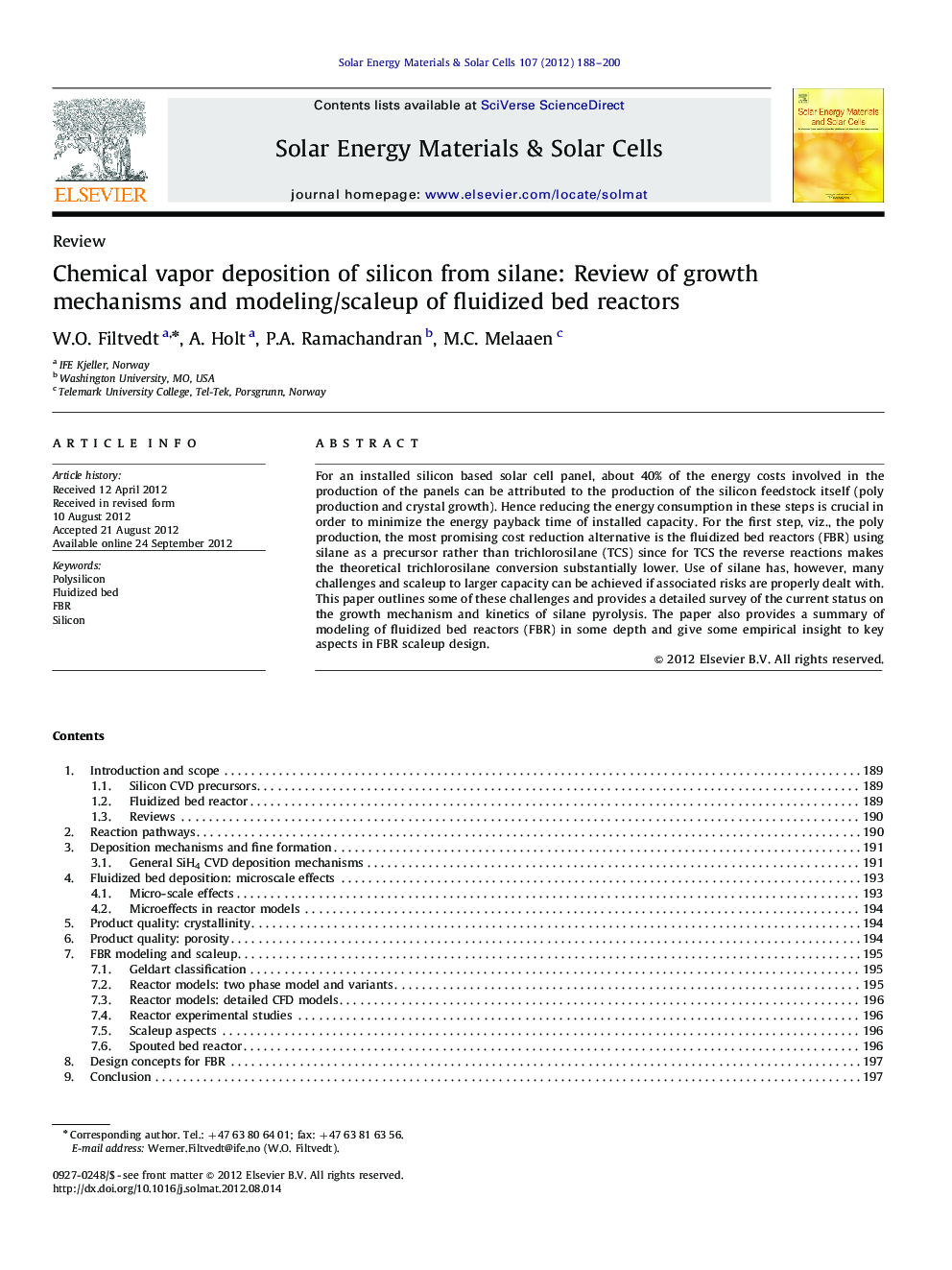| Article ID | Journal | Published Year | Pages | File Type |
|---|---|---|---|---|
| 78907 | Solar Energy Materials and Solar Cells | 2012 | 13 Pages |
For an installed silicon based solar cell panel, about 40% of the energy costs involved in the production of the panels can be attributed to the production of the silicon feedstock itself (poly production and crystal growth). Hence reducing the energy consumption in these steps is crucial in order to minimize the energy payback time of installed capacity. For the first step, viz., the poly production, the most promising cost reduction alternative is the fluidized bed reactors (FBR) using silane as a precursor rather than trichlorosilane (TCS) since for TCS the reverse reactions makes the theoretical trichlorosilane conversion substantially lower. Use of silane has, however, many challenges and scaleup to larger capacity can be achieved if associated risks are properly dealt with. This paper outlines some of these challenges and provides a detailed survey of the current status on the growth mechanism and kinetics of silane pyrolysis. The paper also provides a summary of modeling of fluidized bed reactors (FBR) in some depth and give some empirical insight to key aspects in FBR scaleup design.
